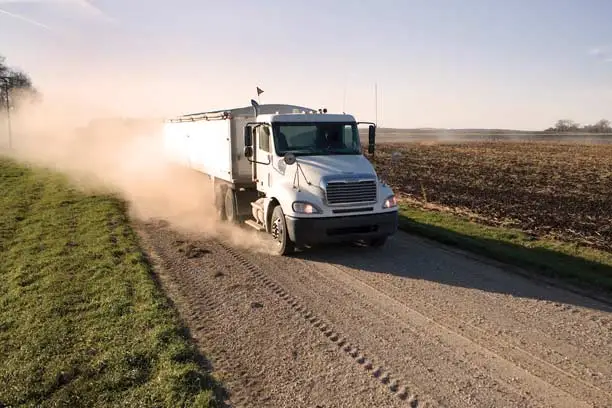7 Harvest Safety Tips for Operating Farm Equipment on the Road


Harvest season brings unique challenges and increased agricultural machinery on the roads. To ensure safety for everyone when it comes to sharing the road with farm equipment, it's crucial to follow specific guidelines. Here are seven essential tips to help you navigate the roads safely during harvest season.
Knowing the laws for driving tractors and other farm equipment on public roads is vital. Common regulations of course include speed limits, proper signage and markings. For instance, Arizona's five-car law requires slow-moving vehicles to pull over if five or more cars are behind them. Additionally, some states have weight limit exemptions during harvest season, restrictions on driving times and limits on how far tractors can be driven. Always check your state's specific laws to ensure compliance.
Visibility is key to preventing accidents. Equip your farm machinery with slow-moving vehicle (SMV) signs, reflective tape and proper lighting. Ensure that all lights and flashers are functioning correctly to alert oncoming traffic of your presence.
Regular inspections can prevent breakdowns and accidents. Here are some critical points to check:
Be aware of the road conditions, including hills, sharp curves, blind corners, potholes and loose gravel. Adjust your driving for rainy, nighttime or low visibility conditions. Anticipate poor conditions and drive cautiously on rural roads with minimal stop or yield signs.
Operating slow-moving farm equipment during high traffic times can be risky. Try to avoid driving during peak hours when personal vehicles are most abundant. Plan your routes and times to minimize interaction with heavy traffic.
A pilot vehicle can enhance safety by alerting other drivers to the presence of farm equipment. In some situations, using a pilot vehicle is required by law. Even if not mandated, a rear or front pilot car can provide additional safety. Ensure pilot vehicles are equipped with proper signage and markings
Wide, slow-moving vehicles should stay in the right lane whenever possible. On single-lane roads, maintain enough stopping space between your machinery and other vehicles. Allow sufficient space for other vehicles to pass safely.
Operating farm equipment on public roads involves unique risks that may not be covered under standard farm insurance policies. It's essential to understand your coverage options:
Consult with your local Farm Bureau insurance agent to ensure you have adequate coverage for your farm machinery when it's on the road. Additional endorsements may be necessary to cover equipment in transit. By following these tips and having proper insurance coverage, you can drive safely during harvest season and protect both your farm equipment and the public.